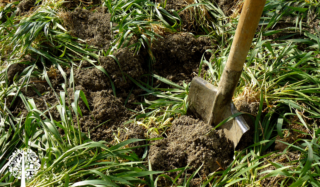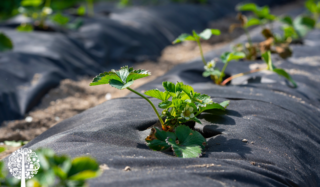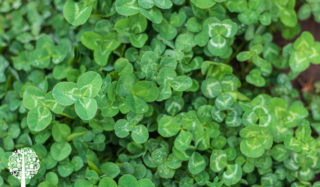It’s been a long season. As you lop off the last plants and fruits for hang drying or fresh-frozen storage, your thought dreams drift you to a more relaxing oasis away from the arduous tasks performed for the last six to eight months. But, you’re so not finished. Post-harvest land preparation is arguably the most important work you can do on the farm for profitability and environmental sustainability.
Regenerative Prep
Regenerative growers, whether following organic, biodynamic, or natural farming techniques, are blossoming worldwide. Placing a regenerative agricultural lens on growing helps shape some integral practices that can help stave off some of the common challenges annual crops face (e.g., cereal grains, oilseeds, corn, etc.). These challenges include bare soil, soil compaction, poor water retention and infiltration, increased weed pressure, and pests and pathogens.

As regenerative farmers, hopefully, notions like the use of green manures, insectaries (i.e., refugia areas with companion plants to attract beneficial insects), cover crops, mulches, compost teas, and fermented extracts, etc. were not foreign practices during the growing season. Using these farming methods should have the land pretty well set for just some minor tweaks to get your beds ready for next year’s crop.
Ideally, most annual crops, should undergo crop rotation and not be planted in the same field for three to four years to help address weed, pest, and disease issues. However, for many growers, the infrastructure for these plants parallels that of perennial crops like grapes, hops, and fruit trees and, therefore, are managed more like an orchard or vineyard as a permanent bed system. A lack of rotation will create severe selection pressure, and viruses, viroids, fungal diseases, and insects will prosper. As a result, the primary goal for fall preparation is to create or maintain a “disease-suppressive” soil to combat any future pest or pathogen.
Disease-Suppressive Soil
What defines a disease-suppressive soil? First, it does not mean the absence of disease or the virulent pathogen; rather, it refers to the soil’s ability to render the pathogen benign or keep it from gaining a stronghold in the soil community. Chemical and physical characteristics can create a disease-suppressive environment, but the microbial community does most of the work. At present, there is no definitive explanation as to what is happening in these soil communities, but, in large part, potential pathogens are held back in three ways:
1) Competition – plant-beneficial microbes are more populous than pathogenic ones and out-compete them for resources, especially Carbon (C) and Iron (Fe).
2) Production of an antibiotic – microbes are the source of many antibiotics used in humans; these same microbes can create molecules that kill other microbes.
3) Production of volatiles – interestingly, many of the terpenes sought after in our plants are the same molecules that can inhibit pathogen growth.
More Post-Harvest Prep Tips

Many of the regenerative farming practices mentioned above are foundational in creating a disease-suppressive soil, but here are some steps to follow post-harvest to help prepare for spring planting:
- Remove all plastic mulch (not recommended for sustainability) or landscape fabric. Hopefully, soon, there will be more non-petroleum-based biodegradable mulches, maybe even hemp-based!
- Mow or shred any leaf, stalk, or exposed root-ball material; this increases the surface area of these materials, boosting their opportunity to decompose quicker, thereby not being a suitable host for overwintering pests or pathogens. Ideally, you have left some rows with natural vegetation (e.g., weed refugia) to provide homes for overwintering beneficial insects.
- If there is a window (i.e., how many days before frost) to plant a cover crop, choose an appropriate cover to meet your needs (e.g., nutrient scavenger vs. weed suppression vs. increase organic matter vs. break soil compaction, etc.). Some growers will carefully scatter cover crop seeds a few weeks before ‘Croptober’ to help establish cover before cold temperatures set in.
- Based on soil tests, you may want to add some soil amendments that require significant weathering to become plant-available, like limestone, gypsum, rock phosphate, rock powders like Azomite, greensand, glacial or basalt rock dust. Remember to ensure that heavy metals like Arsenic (As), Cadmium (Cd), Lead (Pb), and Mercury (Hg) are sufficiently low.
- Feed your soil with microbial foods and microbes. During the winter months, when plants aren’t actively growing, very little food is offered to soil life. Using compost, compost teas, compost extracts, and fermented teas can not only help keep some bare soil more aggregated but can also boost microbial populations. Some growers using organic fertilizers with a high C:N ratio (Carbon:Nitrogen), like alfalfa meal or insect frass, will include extra food for the microbes. Over winter, these will become plant-available and ready for plant uptake when something is actively growing on the bed.
- Lastly, many growers add special ingredients to their fall elixirs, like kelp extract, humic acid, sea minerals, fish hydrolysate, and even simple sugars like molasses. Chock full of vitamins, amino acids, and trace minerals, these soil drenches create an active microbial community that surpasses what is witnessed during the growing months.

Preparing your beds in the fall should not be confused with applying soluble fertilizers. Soluble fertilizers will leach out of the soil with winter precipitation. Proper fall preparation involves using microbes and microbial foods that will help make nutrients plant available when needed and, more importantly, help make the soil more disease-suppressive, securing another favorable crop.